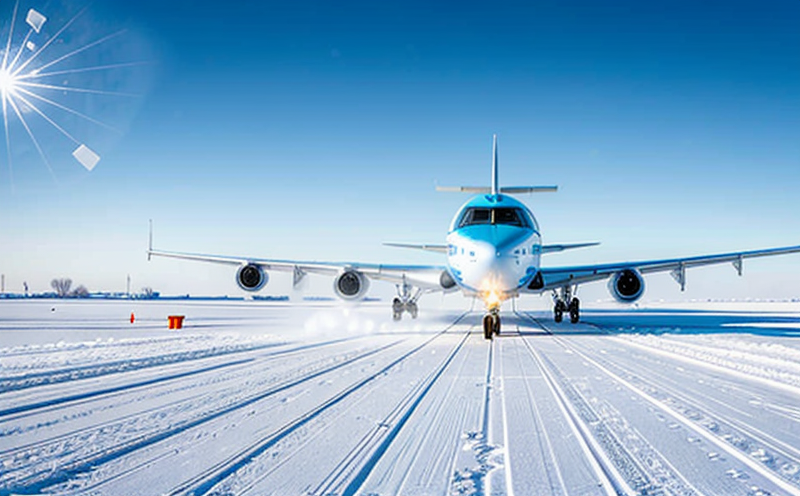Ice resistance testing for aircraft de-icing and anti-icing systems
The Crucial Role of Ice Resistance Testing for Aircraft De-Icing and Anti-Icing Systems Why Your Business Needs It
As the aviation industry continues to grow, aircraft de-icing and anti-icing systems have become an essential component in ensuring safe takeoff and landing conditions. However, these systems are not foolproof, and their effectiveness can be compromised by various factors such as temperature fluctuations, air pressure changes, and even manufacturing defects.
This is where Ice Resistance Testing for Aircraft De-Icing and Anti-Icing Systems comes into play a laboratory service that simulates real-world conditions to evaluate the performance of these critical systems. As a leading provider of this service, Eurolab plays a vital role in helping businesses ensure their aircraft de-icing and anti-icing systems meet or exceed regulatory standards.
What is Ice Resistance Testing for Aircraft De-Icing and Anti-Icing Systems?
Ice resistance testing involves subjecting aircraft de-icing and anti-icing systems to simulated environmental conditions that mimic the rigors of real-world flight. This includes exposure to various temperature ranges, air pressure fluctuations, and even ice accretion scenarios.
The goal of Ice Resistance Testing is to assess the systems ability to effectively prevent or remove ice from critical surfaces such as wings, control surfaces, and propellers. By evaluating these systems under realistic conditions, manufacturers can identify areas for improvement, optimize performance, and ensure compliance with regulatory requirements.
Why Your Business Needs Ice Resistance Testing
Incorporating Ice Resistance Testing into your quality assurance program offers numerous benefits that can directly impact the safety, efficiency, and profitability of your operations. Here are some key advantages
Enhanced Safety By ensuring aircraft de-icing and anti-icing systems meet or exceed regulatory standards, you can significantly reduce the risk of accidents caused by ice-related incidents.
Compliance with Regulations Ice resistance testing helps you stay ahead of regulatory requirements, which is essential for maintaining certification and avoiding costly fines.
Improved Performance By optimizing aircraft de-icing and anti-icing systems, you can enhance their overall efficiency, leading to reduced maintenance costs and downtime.
Competitive Advantage Demonstrating a commitment to safety and regulatory compliance through Ice Resistance Testing sets your business apart from competitors, helping you secure contracts and build customer trust.
Key Benefits of Ice Resistance Testing
Increased Safety Margins By evaluating aircraft de-icing and anti-icing systems under realistic conditions, you can identify areas for improvement and optimize performance.
Cost Savings Reduced maintenance costs and downtime resulting from improved system efficiency.
Regulatory Compliance Staying ahead of regulatory requirements ensures certification and avoids costly fines.
Competitive Advantage Demonstrating a commitment to safety and compliance sets your business apart from competitors.
A Closer Look at the Benefits
Lets take a closer look at some of these benefits
Enhanced Safety According to industry estimates, ice-related incidents can result in significant losses, including aircraft damage, crew injury, or even loss of life. By ensuring aircraft de-icing and anti-icing systems meet regulatory standards, you can mitigate this risk.
Compliance with Regulations Regulatory bodies such as the Federal Aviation Administration (FAA) require manufacturers to demonstrate their products compliance with strict safety standards. Ice resistance testing helps you stay ahead of these requirements, avoiding costly fines and reputational damage.
QA Your Questions Answered
Weve compiled a comprehensive QA section below
Q1 What is the purpose of Ice Resistance Testing?
A1 Ice resistance testing evaluates the performance of aircraft de-icing and anti-icing systems under realistic conditions, ensuring they meet or exceed regulatory standards.
Q2 How does Eurolabs Ice Resistance Testing service benefit my business?
A2 By partnering with Eurolab, your business can ensure compliance with regulations, enhance safety margins, improve system performance, and gain a competitive advantage in the market.
Q3 What are the key factors considered during Ice Resistance Testing?
A3 Our testing services assess aircraft de-icing and anti-icing systems ability to withstand various temperature ranges, air pressure fluctuations, and ice accretion scenarios.
Q4 How long does the testing process typically take?
A4 The duration of our testing services varies depending on the specific requirements of each project. However, we can often complete testing within a matter of weeks or months.
Conclusion
In conclusion, Ice Resistance Testing for Aircraft De-Icing and Anti-Icing Systems is an essential component in ensuring safe takeoff and landing conditions. By partnering with Eurolab, your business can benefit from enhanced safety margins, compliance with regulations, improved system performance, and a competitive advantage in the market.
Dont compromise on safety or risk reputational damage by neglecting Ice Resistance Testing. Contact us today to learn more about our laboratory services and how we can help you optimize your aircraft de-icing and anti-icing systems.




